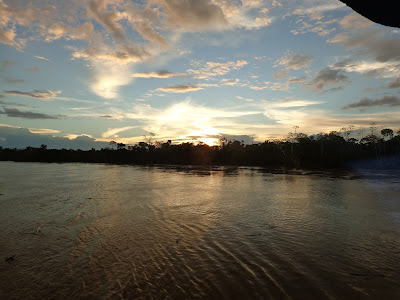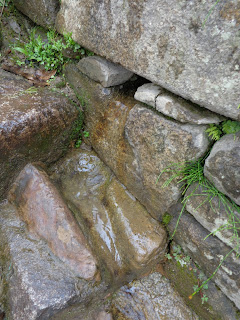I try to maintain chronological order in my posts by
skipping as little as possible. Maybe it’s my fecklessness or maybe it is
because I am preoccupied with more the ultimately more pressing matters in my
life. Regardless, I tend to post a lot then slack off. This is not to say I do
not write. I write all the time. But, when it comes to asking people to read
what I write, I get anxious about decorating and dressing it up to convince
myself that people can actually read it (let alone enjoy it). I could tell
tales of dancing Salsa with Colombian babes, harrowing late night pickup rides
through the middle of the desert to far-off beaches, or days of relaxing on
golden sands of paradise on the Caribbean. But, those will have to wait for
another day. To end this little blog recession that has been ailing me lately,
I will begin by recounting the end of my South American journey:
I stepped out of the hostel glad to see the sun had not
fought through the clouds yet. Was it clouds or was it smog? Being in Bogota, it
was difficult to distinguish between the two. It had already been a frantic
morning as goodbyes had been said and future plans had been mentioned. Two old
friends made it to Colombia just days before, beginning a long journey just as
I was ending mine. My mind still perplexed and muddled from the lingering effects
of my last night out. One would think scheduling a midday flight would have alleviated
such worries. It’s a difficult thing to get trapped in goodbyes when you feel
the hellos have just been said – an experience I’ve come to know too well as of
late. Regardless, the hope and promise of reunion, whenever it may occur, kept
my mind occupied as I made my way into the world.
I knew I was late. But still, I knew I would need something
to eat before the airport – my principles force me to avoid spending money in
airports at all costs. My mouth was dry like desert sand, so I had to find
water, as well. The streets were oddly, but eerily quiet for this late in the
morning. I realized I wasn’t choking on bus exhaust nor dodging motorcycles –
the streets of La Candelaria were completely empty. As it turned out, I was
lucky to find anything open at all. It was Colombian Labor Day. My first
thought when I realized how empty the streets were: I hope taxi drivers don’t celebrate
Labor Day. I had walked already a handful of blocks and seen street
demonstrations and scores of people milling about. But not one taxi (on streets
usually overcrowded with taxis). I keep walking towards hopefully busier parts
of the city. On avenues typically lined with cars, trucks, and taxis, I find
hundreds of people lined up to take pictures of street performers doing silly
dances and obscure poses. I generally try to avoid walking around too much
while carrying my backpack, in which the contents constitute my life. And especially
not through big crowds.
At the sight of riot police (rows of black figures, assumed
to be humans, covered in helmets and armor and carrying batons and shields) one
could either be relieved that there is some form of institutional protection
from would-be-thieves or vehemently worried about walking through a situation
that necessitates riot police. I felt the latter. Vehement worry turns to
outright fear as I saw people hustling past the rows of riot police, towards
me, with scarves and sleeves covering their mouths. Panicked expressions flood
their faces. And I wonder, with the bewilderment that I feel rising in my stomach,
what my face looks like. Then it starts to burn. My nose, my throat, my eyes.
And with nothing to cover my face, I started to feel wheezy and wobbly. I thought
to myself, ‘You have a plane to catch, you have all your personal belongings on
your back, and this is not the place to pass out.’ So, I gathered myself and tried
to make it the through the invisible poison as quickly as possible. I couldn’t
make out any sort of disruption that might have warranted the use of tear gas
or pepper spray, whichever it was. So I kept walking.
Eventually, I walked past the grasps of the poison, everyone
else seemingly oblivious to the irritating fumes behind me. I maintained
consciousness and returned my scattered thoughts to my original goal of finding
a taxi. I pressed on through a few blocks of vacant streets. Finally, the main thoroughfare
appeared with the normal sight and sounds of busses rumbling and cars honking.
I saw several taxis hurry past. All full. Finally, I catch the attention of one
driver stopped at the intersection. So I scramble across the lanes of traffic
just in time to hop in as the light changes to green. As I shut the door I told
the driver that I am headed for the airport, and suddenly my body realizes it
can calm down. I still felt the irritation of the gas on my throat, but my ears
recognized just how quiet the taxi is. Calmly I asked for the time and let the
driver know I was in a hurry. There is nothing like a hectic hike through
Bogota and its toxic, crowd-suppressing gases to clear even the deadliest of
hangovers. And I was off.

















